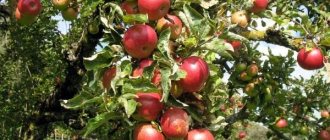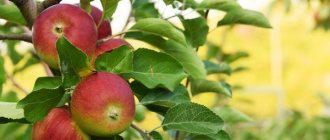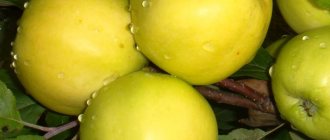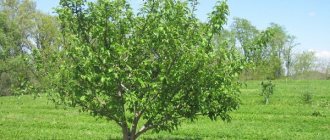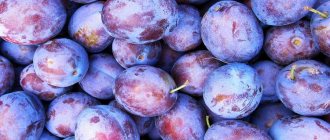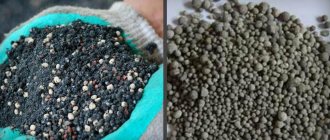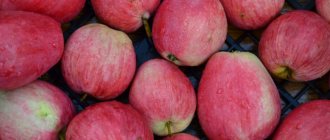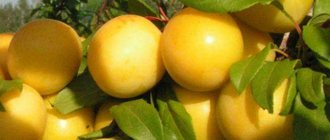There is a plot for a garden. And every gardener, when planning it, definitely wants to plant apple trees. There are also those who just want to plant an apple tree. He is not interested in the variety. So that they are tasty and that's it .
It's rare, but it happens. The majority are those who want early, middle and winter apples in the garden and on the table.
old traditional varieties well known for their delicious apples . But there are now enough new varieties. Many of them are even better – in taste and appearance. Yes, and for other qualities.
In fact. What does a gardener want from apples:
- So that they are large, beautiful and tasty.
- Their productivity was high and annual.
- So that they are not afraid of frost and disease.
- So that they do not spoil quickly, but are stored longer.
- And care should be easy . A lower tree is much more convenient than one 5-6 meters tall. Run under it then with the ladder.
- You also need to remember about the ability of the chosen variety to grow and bear fruit well in your place of residence.
Nowadays, the garden can be larger on low-growing rootstocks (dwarf and semi-dwarf) with 8-10 apple trees.
I will suggest an option:
- Early and late summer - 2-3.
- Autumn -2-3.
- Winter -4-6.
I will be glad if you agree with him.
Advice! If I have already suggested an option in terms of quantity, I dare to recommend the Orlinka apple tree among the summer-ripening varieties.
The Orlinka apple tree is characterized by high productivity.
Description
Let's get to know this apple tree:
- Year of birth: 1978.
- Place: All-Russian Research Institute for Selection of Fruit Crops. Orel city.
- The original varieties are Stark Erliost Precos and First Salute.
- Creators-authors – E.N. Sedov, Z.M. Serova, N.G. Krasova.
- Since 1991, it has already been in the State Register in the Central Black Earth region. You will meet its plantings in the Moscow region, Oryol, Perm, Kaliningrad, Vladimir regions. And this is not a complete list.
Tree:
- A vigorous tree with a spherical crown .
- Smooth, compact branches extend from the trunk at sharp angles.
- Dark gray and smooth bark .
- It bears fruit on ringlets and spears.
- In thick and rounded shoots, weak geniculation is barely noticeable.
- Matte-colored, elongated leaves have a twisted top and an elongated petiole.
- Large light pink flowers from large flower buds .
- Slightly flattened, round and medium in size fruit. Their weight is from 100 to 200 grams. But the bulk of the fruit is about 150 g. With shiny and smooth skin.
Fruits of the Orlinka apple tree. - The greenish-yellow color quickly turns light yellow when picked. Painted with red stripes over most of the surface. Subcutaneous points are also noticeable.
- Aromatic sweet and sour taste of the pulp.
By the way! Experts often make comparisons with the Melba apple tree. We will do this too. Still, Melba is known to many.
Collection and storage
The fruits of the Orlinka apple tree are harvested in mid-August. Fruiting is extended, so work begins in several stages. They are stored for only 2-3 weeks, after which they finally ripen and are ready for consumption.
Optimal storage conditions are a dark, cool place with a temperature of 2-6 degrees Celsius and a humidity of 70%. The fruits are placed in wooden boxes in several layers and inspected periodically.
Important! If there is too much harvest, you need to immediately plan to prepare jam, compotes and other preparations, since it will not be possible to preserve them in normal condition until winter.
additional characteristics
Advantages and disadvantages
Advantages:
- Very adapted to harsh conditions . He is among the leaders. Therefore, it is suitable for cultivation in many regions of Russia. It was created for them.
- Does not require any special care conditions.
- The apples are of very high quality – both in marketability and in taste.
- It is noted for its precociousness and high productivity.
Apples do not ripen on a tree at the same time. And sort of take turns. For the consumer, the pleasure is prolonged. This is considered a minor drawback. It's summer after all.
Tree height and crown width
Strong and tall trees with a round (spherical) dense crown.
When young, the branches are directed upward.
With the beginning of fruiting, they bend more towards the ground. Fruits also help.
Productivity
Quite decent for an early variety.
Even from young apple trees you can collect up to 25-30 kg per tree. And more. Let's not talk about yield per hectare.
Melba will give less. Or maybe you'll take less.
Tasting assessment
According to all indicators, they are rated 4.3 points out of five.
Take into account 9.5% sugar and acid.
Winter hardiness
Interesting fact. Not the strongest resistance to frost .
This is how experts characterize it. But it ensures that gardeners in Central Russia can successfully grow this early variety.
Disease resistance
In each region, disease resistance is quite satisfactory.
In the Oryol region (in their homeland) they are very resistant to scab.
But you won’t wait to see how the apple tree itself will resist disease.
Advice! Develop a small system for preventing illness and disease. And there will be no need to save from something in a fire emergency. It is not difficult.
Advantages and disadvantages
VNIISPK specialists classify “Orlinka” as one of their best apple trees in terms of the biochemical composition of the fruit, and also note its early fruitfulness and productivity. In the conditions of central Russia, the variety showed excellent winter hardiness (at temperatures up to −30 ℃) and high resistance to scab of fruits and leaves - damage at the level of 1 point out of 4 (in field trials in the Belgorod region).
For apples left to ripen on the tree, the taste deteriorates, as the pulp becomes more watery, loose, “glassy” (becomes transparent)
Practical experience in growing Orlinka is not yet enough. Summer residents speak generally positively about it; the disadvantages include the height and large dimensions of the apple tree, the frequency of fruiting, deterioration in the taste and texture of the fruit pulp due to an extended period of ripening on the tree, and the tendency to be affected by fruit rot.
Reviews
Anna. Vladimir. “The first fruiting of the Orlinka apple tree occurred 5 years after planting. We bought it after studying the description and photos. Delicious and early summer apples. I liked it. It’s too early to talk about productivity. The tree is still small, but it has produced a lot of apples. There was a lot of fall - summer ones. Or maybe a lot of ovary.”
Stepan. Kursk “I’m happy not only with the apples. Everything that was written about it when studying the photo and description of the variety corresponds. Even the fact that individual apples reach a weight of 210 grams.
A new scab-resistant apple variety from the All-Russian Research Institute for the Breeding of Fruit Crops with summer-ripening fruits. In a good season they are almost all the same size – large. It is better to remove them from the tree when they are yellowish - crispy, tasty, juicy. When they acquire an orange color, they are glassy-loose. Watery porridge. Don't let them fall off! Remove them for juice yourself, slightly unripe.”
Semyon Anatolyevich. Nizhny Novgorod. “It just so happened. But there are two early varieties of apple trees in the garden - Melba and Orlinka. So you have to compare all the time. Both are good. But I still like Orlinka more. To me. My wife has a slightly different opinion. She prefers Melba. Almost simultaneously they matured.
We filmed Orlinka before. A good harvest added to the troubles. There are already enough of them at this time. Treated. We even managed to sell something. They took it away right away. Just don’t let it fall!”
Features of growing Orlik
Landing
Basic conditions
Orlik should not be planted in lowlands, near natural bodies of water (streams, lakes, ponds, rivers), shallow wells, or in floodplain meadows, as it can reach the water with its roots and rot. High groundwater, above 2.5-3 meters, can also have a detrimental effect on trees. It is optimal to choose open areas for the variety with good ventilation and sunlit most of the day. The trunks are not particularly afraid of the shade; they will produce crops even there, however, the fruits may be smaller and there will be fewer of them, albeit slightly, in quantity. Absolutely any soil is suitable for the variety, from black soil, which for all apple trees is best initially diluted with river sand, to sand and loam. Even on rocky mountain slopes, Orlik feels quite good and produces good harvests. The holes can be prepared in advance, ahead of the season, or they can be dug directly 1-4 weeks before planting. Holes 70-80 centimeters deep and the same in diameter are enough. Soil from the top, fertile layer is placed at the bottom, having first mixed it with peat, humus or any other organic fertilizer. All this is covered with 10-15 centimeters of drainage (stones, gravel, crushed bricks) and filled with 45-60 liters of water. Supports, which can be made of metal, wood, or plastic, are driven into the holes. Seedlings are subsequently tied to them. They cannot be removed from the soil earlier than 2-3 years after the start of fruiting. There is no need to leave a lot of space between the trees; 4x5 meters will be quite enough for Orlik’s compact crown. The root collar of the tree is left 5-9 centimeters above the surface, otherwise it may take root higher. In this case, the original qualities of the rootstock will be lost.
If this is not important, then you can ignore this advice. Place the seedling vertically in the hole, straighten the roots, sprinkle it with earth and tamp it down with your hands. A small mound of soil is made around the tree, 50-65 liters of water are poured inside, and the surface is mulched with any available material (humus, sawdust, chopped grass, compost).
Disembarkation dates
You can plant trees in early spring, around the end of March or beginning of April, while the buds have not yet begun to bloom, but the frosts have already completely receded. However, the most advanced gardeners still recommend waiting until autumn (September-October), when leaf fall has completely ended. So, according to statistics, the survival rate of seedlings is much higher, and the trees themselves, after autumn planting, grow stronger and begin to bear full harvests earlier.
Protection from frost and rodents
The trees are quite resistant, but they still need to be covered for the winter. To do this, in harsh regions they throw mats of straw or grass or rags over the root area, and in warmer regions they wrap the trunks with burlap or roofing felt. It is quite possible to wrap dwarf and semi-cardi options using the tent method.
To prevent insects from settling in the bark or roots, and to successfully feast on leaves and fruits in the spring, trees are whitewashed to a depth of approximately 1-1.2 meters with lime. Lubricating the trunks with rendered lard or grease or drying oil will help scare away hamsters, hares and mice.
Tree care
Loosening the soil, watering: proper agricultural technology
Orlik does not need constant care for the trunk area; one digging per year is enough for him at a young age. Moreover, at a more mature age, trees can generally be covered with turf in order to fully optimize care. However, at the very beginning, removing weeds from under the trunk, fluffing and loosening 4-6 times during the summer will not hurt.
It is possible to water trees in the early stages of growth, but they can also take care of themselves. Therefore, in the first or fourth year, it is recommended to add water 3-4 times per season if the weather is really dry and very hot, and in the future you don’t have to think about it at all. It is good to water when applying fertilizers and fertilizing to make it easier for the trunks to absorb nutrients.
Pruning: simple crown formation
Orlik is not very prone to thickening the crown, so in the second year formative pruning is carried out, and then the shape is maintained and adjusted in time. First, part of the central trunk is cut off, and only 2-4 skeletal shoots are made, which should be 7-9 centimeters shorter. In the future, excess branches are removed, those that stick out inside the crown or vertically upward (tops).
Regular inspection and sanitary pruning is important. It is necessary to promptly remove dry, diseased or damaged shoots, which can waste sap from the tree.
These manipulations are done in the fall, when the sap in the trunks has stopped moving, and the cut areas are covered with garden pitch.
Features of planting and care
Landing
Deadlines
Life doesn't always work out the way you would like. Same with planting dates. You definitely can’t write them down. Even if they try. And they make up gardener’s lunar calendars.
Advice! One amateur gardener I know said: “For me, the best lunar calendar is suitable weather and a non-working day.”
The main thing is that these are acceptable and suitable conditions :
- Weather and soil conditions.
- Readiness and availability of seedlings.
- And follow the principles and rules of planting an apple tree.
But still:
- As with most early varieties, preference is given to planting in the spring: Second half of April, early May.
- After the leaves fall and 25-30 days before the onset of frost. Not even frost, but real cold.
Technology
- Choose a suitable place and soil : Sunny areas are very comfortable for this variety.
- If there are slopes, then they are southern.
- Loamy, loose, light soils.
- Think about drainage too.
There are no special features when landing.
- The planting method and sequence is usual : Prepare a planting hole of the required size (up to 60 cm deep and up to a meter in diameter). Taking into account the root system of the seedling: In advance (gardeners advise).
- Fill it with fertile soil with fertilizers, compost and ash.
- Place the seedling on the prepared mound, evenly distributing the roots.
Correct planting technology
Watch out for grafting! It should be 5-8 cm higher above the ground and when the soil shrinks.
Distance
It will depend on what rootstock the seedlings are on and what crown shapes you choose .
And it will be:
- With a vigorous rootstock - 4.5-5.0 m between rows and 3.5-4.0 m in a row.
- With semi-dwarf - 4.0 m and 3.0 m.
- With dwarf - 3.0-3.5 m and 2.0-2.5 m.
Recommended landing distances.
Features of cultivation
- Note. No special features .
- Water regularly. Especially after planting in spring: More often in hot weather. But in the evening.
- Under the root with watering.
Agricultural technology
Includes a set of measures for caring for an apple tree. Some of them have already been considered.
Pay attention to pest control . There are plenty of people who like to feast on your work - more than 30 (sucking, gnawing, etc.).
When is it more effective:
- Treatment of wintering stages of pests (February - March): copper sulfate and preparation 30B, DNOC, Khom and fufanon.
- April-May - before flowering: Aktara, Enzhio, Urea, Nitrafen.
- June-August - 2-3 times, during the formation of the ovary and fruits: Aktara, Preparation 30B.
- October-November – after harvesting the fruits and falling leaves: Urea, Fufanon, Iron sulfate.
Apply insecticides:
- Chemical.
- Biological.
Advice! Don't forget about folk remedies.
Pruning and crown formation
They are mandatory techniques.
Pollinator varieties
For many apple trees, this variety is an indispensable pollinator.
This should be planted next to Orlinka:
- Padding,
- Melbu,
- Moscow Grushovka.
It will help them by providing better pollination. And she herself doesn’t seem to need others. But who is against good neighbors!
Apple tree care
Two weeks after planting, the apple tree should be watered 2 times a day. In the future, watering is reduced to 1 time per day. It is enough to water an adult tree 3-4 times a month, taking into account the season and weather conditions.
You should always try to keep the root zone of the plant clean - weed it regularly and under no circumstances plant other plants on it.
Although the Orlinka variety is quite winter-hardy, experienced gardeners in winter additionally protect the tree from frost with mulch or wrap the trunk with covering material. In addition, by covering the lower part of the apple tree, you can avoid damage to the trunk by hares and mice. In this case, a special rodent mesh is also excellent.
Orlinka responds especially well to fertilizers and formative pruning. In spring, the apple tree is fed with organic matter and minerals. In the fall, you can feed with a complex fertilizer that does not contain nitrogen. Formative pruning is recommended to be carried out every year in April. In a young tree, only weak, diseased and crooked branches are thinned out. In mature trees, branches that go down to the ground, as well as simply thickened branches, are pruned to increase the yield.
For normal pollination and fruiting of Orlinka, it is recommended to grow at least one more type of apple tree on your own or a neighboring plot. The best varieties for pollination are Melba, Memory of the Warrior and Orlovskoye Polosatoe.
Features of ripening and fruiting
Beginning of fruiting
In the 4-5th year after planting and good care, you will definitely taste these Orlinka apples.
From the beginning of fruiting, apples of the Orlinka variety are quite large.
Flowering period
All the apple trees are blooming beautifully. The aroma and buzzing of bees will not leave anyone indifferent. Lyrics and poems are composed. And Orlinka also blooms a lot. And earlier than others - in the first half of May.
Fruit ripening time
Everyone likes the Orthodox holiday Apple Saving. So Orlinka is maturing for this holiday. To dedicate it in church too. And eat it with honey.
Make a note for yourself! If your neighbor has Melba growing, you can treat him to Orlinka before he gives you Melba.
Features of fruiting
Do not forget. Apples on a tree, even with such a short period of time allotted for the ripening of early apples, do not all reach maturity at once . They are removed a couple of times with an interval of 5-7 days.
Shelf life
- They are short - about 15-20 days.
- It happens for a month: If you took it off carefully, put it in drawers.
- Placed it in the refrigerator.
Diseases and pests
Pest control is always more difficult than following preventive measures. Therefore, many gardeners spray trees with chemicals in the spring. This should be done before flowering and the first buds open. Also be sure to fertilize and trim old branches and twigs.
Among the common pests of apple trees are: codling moth, aphids, flower beetles, sawflies, scale insects and others. Pest control is carried out in the spring. The tree is sprayed with karbofos, metaphos, chlorophos.
Scab is a particularly dangerous disease. The fungus most often affects due to a lack of oxygen and excess moisture in the root zone.
To combat, treatment is carried out with Bordeaux mixture and copper oxychloride.
Another common fungal disease is powdery mildew. The drug topaz or speed is effective against it.
The Orlinka apple tree is considered a very good choice for growing in many regions of our country.
It attracts attention due to its easy care, good taste and decorative qualities, and good immunity against diseases.
If you give her care and attention, she will delight you with a bountiful harvest for a long time.
Subspecies and options
Let's remember why it is better on low-growing rootstocks :
- They begin to bear fruit earlier.
- Productivity is higher (per unit area). Particularly important for the industrial cultivation of apples. For the market.
- Maintenance is more convenient and easier due to short trees (pruning, treatment for diseases and pests).
- The quality of the fruit is considered the best due to better illumination of the crowns (larger sizes, more intense color, tastier).
- You can choose any crown shape , including original ones. What will make your garden even more beautiful.
- There will be room for other varieties.
But keep in mind:
- Lifespan is about 2-3 times shorter.
- They freeze more . Because of the root system.
- More demanding on soil and agricultural technology.
Important! Pay attention to the rootstock. For you, you need it zoned frost-resistant.
On a semi-dwarf rootstock
It will be up to 4 m high. You will try apples earlier - in 3-4 years. Rootstocks 54-118, 57-545, 60-160, 60-164.
On a dwarf rootstock
It will grow up to 3 m in your garden. And the first fruits will appear in 2-3 years . New rootstocks: Baby Budagovsky, Paradise Budagovsky, B9 and others.
Features of growing Orlovim
Landing
Key Features
- The place for planting the variety should be very sunny, not shaded. Do not forget that apple trees love space and good ventilation, but without drafts.
- It is optimal to choose loamy and sandy loam soils for planting; seedlings feel best in them.
- An apple tree on a vigorous rootstock is very sensitive to high groundwater, and its rhizome can rot. Therefore, for such options you will have to choose a higher place or specially make a drainage or embankment. Orlovim are also not planted near bodies of water. An exception may be the dwarf version, which is not afraid of proximity to moisture.
- Holes for planting must be prepared in advance: for autumn planting, 3-5 weeks in advance, and for spring planting, in the fall. They should be 50-70 centimeters deep and up to 1 meter wide. At the bottom of each, a portion of soil mixed with humus, ash, nitrophoska, urea is laid out, and filled with 20 liters of water.
- Between rows of trees you need to leave up to 4-6 meters, and between the trees themselves in a row 3-4 meters will be quite enough.
- If the rhizomes are dry, the apple trees are placed in a bucket of water 6-8 hours before planting, after cutting off the dry roots.
- Garter stakes are immediately driven into the holes, preferably on the north side.
- The root collar should protrude above the soil surface by at least 6-10 centimeters.
- After planting, lightly compact the soil around the tree without tamping it, pour 20-30 liters of water, mulch with chopped grass, humus or compost.
You can buy seedlings of the variety almost throughout the country, but you can stumble upon other varieties that are often passed off as Orlov. It is best to contact nurseries in Central Russia, for example, in the Moscow region.
Disembarkation dates
The tree takes root well both in spring and in autumn planting. In the spring, it is good to do this in April, even before the sap begins to flow, but after the soil has warmed up well and the risk of frost on the ground has passed.
In the autumn, you need to remember that the tree needs at least 3 weeks to take root, and it is better to give it a margin of 4. Therefore, the maximum time for planting is mid or late October, and even then depending on the region.
Protection from frost and rodents
Seedlings need protection from low temperatures only in the northern regions, as well as in the first years after planting. An adult tree can easily tolerate even quite severe frosts without losing the ovaries. Young shoots can be covered with spruce branches or straw sheaves, wrapped in roofing felt or nylon tights.
To discourage rodents from eating the bark of young trees, you can smear the trunks with rendered lard or grease in the fall. Regular treatments with special chemicals or whitewashing of trunks and lower skeletal branches with lime can save you from insects.
Tree care
Loosening the soil, watering: proper agricultural technology
Loosening and mulching of the soil should be carried out regularly at least twice a season, in autumn and spring. It is constantly necessary to remove weeds, root shoots, and shoots of other trees from the trunk circle. All this will prevent the apple tree from growing normally.
Watering is usually carried out no more than 3-5 times per season. This is enough even in the driest years. You need to water abundantly, using at least 4-6 buckets of water for an adult tree. If natural precipitation falls regularly, watering may not be necessary at all.
Pruning: simple crown formation
What the Orlovim crown will look like in your garden directly depends on how you carry out formative pruning. It can be formed in the form of a palmette, spindle-shaped, tiered or sparsely tiered. Any option for this variety will do. When pruning, leave the branches extending from the trunk at right angles, and cut off those that grow under the sharp ones. They can break off, the tree will experience shock, and the yield will suffer as a result.
Before you begin any type of pruning, give the tree a year to grow freely. You can start pruning only from the second year of life.
Every year you need to perform sanitary pruning, removing all dry, damaged or diseased branches. It is not customary to touch the central trunk during any pruning, and the main skeletal branches need to be trimmed only a few centimeters. It is optimal to transfer all pruning work to the spring, before sap flow has yet begun.
Growing in regions
Previously, I didn’t pay much attention to what the concept of Central Russia includes. Interest in growing apple trees has increased. They can also be called the Central Russian region .
So Wikipedia talks about a conditional term, that it is not strictly formalized.
They mean the territory from the Leningrad and Vologda regions to the Belgorod and Saratov regions. And from Belarus to the eastern Volga region.
Your own variety for Yaroslavl and Mordovia - look at the reviews and offers of nurseries in these regions. No special features! The variety is grown in this region. And for this region.
In Siberia
Regions with cold and long winters are not very suitable for growing this variety. Not the same frost resistance.
Planting an Orlinka apple tree
Planting of the Orlinka apple tree is traditionally planned for the fall - from late September to mid-October. In the south it is allowed to plant in the spring - in early April. When choosing a location, pay attention to several parameters:
- good lighting - there should be no shadows, the area is completely open;
- without high groundwater. A rise of no more than 2 m to the surface is allowed;
- without stagnation of moisture on the surface - lowlands are excluded;
- Large trees and rowan trees should not grow nearby.
The Orlinka apple tree develops well on fertile, light loamy soil with a neutral pH of 6-7. A few months before planting, the soil is dug up and fertilized with humus or compost up to 10 kg per 1 m2. If there is a lot of clay in the ground, add sawdust or sand up to 5 kg to the same area.
When planting an Orlinka apple tree, proceed as follows:
- Mark several holes of the same depth and diameter of 80-90 cm. The crown of the apple tree is not too spreading, but the tree is tall and large, so the interval between plantings should be at least 3 m.
- A support - a peg - is placed in the center.
- Sprinkle small stones on the bottom.
- Then fertile soil is poured.
- The seedling is placed in the center and sprinkled with soil.
- Compact so that the root collar remains 7 cm above the surface.
- Then water with settled water and after a few days thoroughly mulch for the winter. You can use straw, hay, peat and other natural materials.
History of selection
Work on breeding Orlinka was started by Soviet breeders in 1978. For this, a seedling of the American variety Stark Erliest Precos was pollinated with pollen from First Salyut . As a result of careful selection, a species with stable characteristics was obtained.
But over the next ten, attempts were made to improve it. This is how the Orlinka variety was developed with high natural immunity to common crop diseases. The application for registration was submitted in 1993. And 8 years later, the Orlinka apple tree was included in the State Register. Authorship is assigned to the breeders: E.N. Sedov, Z.M. Serova and N.G. Krasova.
Photo of Orlinka apple tree:
Video Review
There is a plot for a garden. And every gardener, when planning it, definitely wants to plant apple trees. There are also those who just want to plant an apple tree. He is not interested in the variety. So that they are tasty and that's it .
It's rare, but it happens. The majority are those who want early, middle and winter apples in the garden and on the table.
old traditional varieties well known for their delicious apples . But there are now enough new varieties. Many of them are even better – in taste and appearance. Yes, and for other qualities.
In fact. What does a gardener want from apples:
- So that they are large, beautiful and tasty.
- Their productivity was high and annual.
- So that they are not afraid of frost and disease.
- So that they do not spoil quickly, but are stored longer.
- And care should be easy . A lower tree is much more convenient than one 5-6 meters tall. Run under it then with the ladder.
- You also need to remember about the ability of the chosen variety to grow and bear fruit well in your place of residence.
Read also: Expanded clay in the basement of a wooden house
Nowadays, the garden can be larger on low-growing rootstocks (dwarf and semi-dwarf) with 8-10 apple trees.
I will suggest an option:
- Early and late summer - 2-3.
- Autumn -2-3.
- Winter -4-6.
I will be glad if you agree with him.
The Orlinka apple tree is characterized by high productivity.
